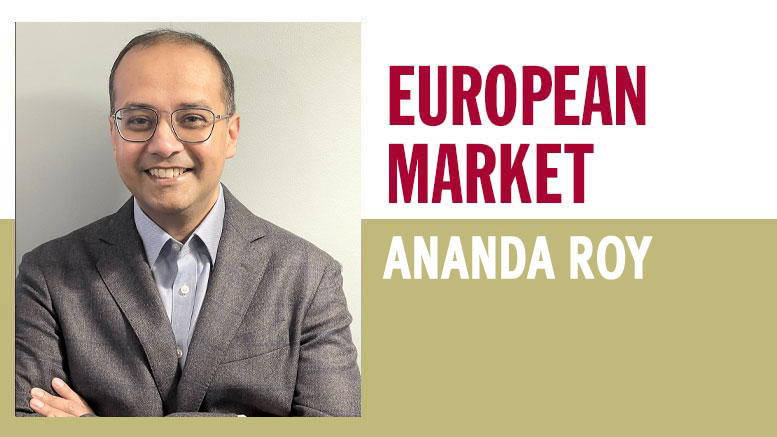Europe’s Largest Grocery Markets Stir Up Demand as Inflation Dust Settles
November 19, 2024 | 4 min to read
As Europe's grocery markets adjust post-inflation, demand recovery is uneven, with countries like Spain and Germany performing well, while the United Kingdom and France struggle. Retailers must move beyond price competition to drive growth through category innovation, strategic promotions, and expanded product ranges. While national brands are recovering, private labels are experiencing slowing growth. Looking to 2024, a cautious optimism prevails, demanding agility in meeting shifting consumer preferences.

As the inflationary dust begins to settle across Europe’s largest grocery markets, demand patterns are shifting, presenting a blend of opportunities and challenges for retailers and manufacturers alike.
While inflation has eased, affordability remains a key barrier to demand recovery. The post-inflationary landscape is marked by uneven volume sales recovery, distinct growth drivers, and a renewed focus on promotional effectiveness and innovation.
EMERGING TRENDS: BEYOND PRICE COMPETITION
The return to volume growth is far from uniform across Europe’s grocery markets. Spain, Germany and Italy have shown solid performance, while the United Kingdom and France lag.
This unevenness is due, in part, to range development and innovation being pared back too far. Where Spain has led, with a notable 4.5% increase in unit sales driven by private labels, France has underperformed, due to soft performance across all categories, with only marginal gains in ambient foods and a significant reduction in SKUs on shelves across the EU6 market.
The strategic key lies in going beyond price competition to focus on category innovation, range development and distribution expansion.
Retailers must embrace the full marketing toolbox to unlock growth. Price remains crucial, but it is no longer the only lever.
Retailers must embrace the full marketing toolbox to unlock growth. Price remains crucial, but it is no longer the only lever. With demand increasingly driven by emerging consumer trends, brands and retailers can win by being proactive with innovation, distribution and promotions.
Effective pricing strategies must now be complemented by carefully curated product ranges and new product launches to stimulate demand. The reduction of SKUs seen across several markets may hinder retailers from meeting evolving consumer needs, particularly as consumption becomes more conscious and purchase decisions more deliberate.
GROWTH AND LAGGING CATEGORIES
Europe’s grocery sector is showing clear signs of recovery, with certain food and non-food categories driving growth. National brands have made headway in reclaiming lost ground, growing 0.2% in fast-moving consumer goods (FMCG) unit sales, buoyed by edibles growth of 0.4%. However, non-edibles continue to lag at -0.9%, despite improvements year-to-date (YTD) and compared to the moving annual total (MAT).
Categories like chilled and fresh, ambient, and frozen have performed well in the YTD, contributing to overall volume growth.
PROMOTIONAL SURGE AND PRIVATE LABEL SLOWDOWN
Promotional activities have surged to a five-year high, with unit share on promotion now at 25.4%, a 3.2 percentage point increase compared to two years ago. This surge has been instrumental in driving recent growth, particularly for national brands, which have narrowed their YTD unit sales decline to -0.7% and even posted a 0.2% growth in the last few months.
Despite this, private labels remain dominant, although their growth rate has slowed, indicating that the promotional focus may need fine-tuning. Private labels saw YTD unit growth of 2.5%, which decelerated to 2.0% in the L13W. This suggests that while private labels have been a key driver of FMCG recovery, their growth might not be sustainable without further innovation or range expansion.
It is critical to note that an increase in promotional activity does not guarantee a positive sales impact across all categories and segments, as some are undergoing a generational transition.
OUTLOOK FOR 2024 AND BEYOND
As we head into the final quarter for 2024, I have a cautious, yet optimistic, outlook. We’re forecasting value sales to continue rising, though at a slower rate, given the anticipated inflationary pressure in Q4, due to geopolitical instability, rising transport costs, and poor harvests in key markets like Italy and Spain.
Volume sales will return in an uneven fashion, with promotional activity likely to be focused on core staples, inching up to 1% by the end of the year, with more robust growth forecasted in H2 2025, reaching 2%, close to pre-pandemic levels.
However, growth drivers will differ from those seen pre-pandemic, with emerging categories such as well-being, snacking, and beverages increasingly blurring traditional category lines. Retailers must stay agile, with a sharp focus on promotional effectiveness and category innovation to meet shifting consumer preferences.
A FINAL WORD…
Europe’s grocery market recovery is underpinned by an uneven, but resilient, demand resurgence. While inflationary pressures have eased, the challenges of affordability, range development, and consumer behavior shifts remain.
Retailers that leverage the full marketing toolbox — beyond price competition — by innovating and refining their promotions, product range and distribution strategies will be well-positioned to capitalize on the opportunities ahead.
The path forward requires a nuanced approach, with careful attention to emerging consumer trends and the evolving dynamics of both national brands and private labels.

Ananda Roy is the senior vice president of strategic growth insights at Circana.
11 of 23 article in Produce Business November 2024

